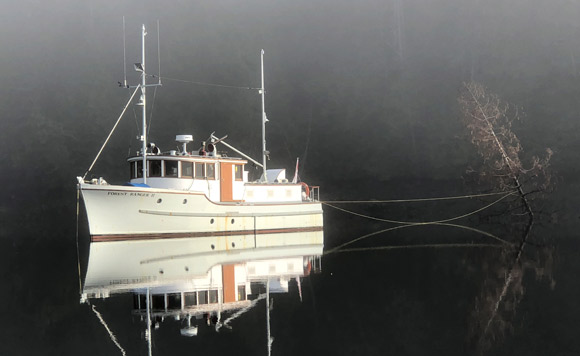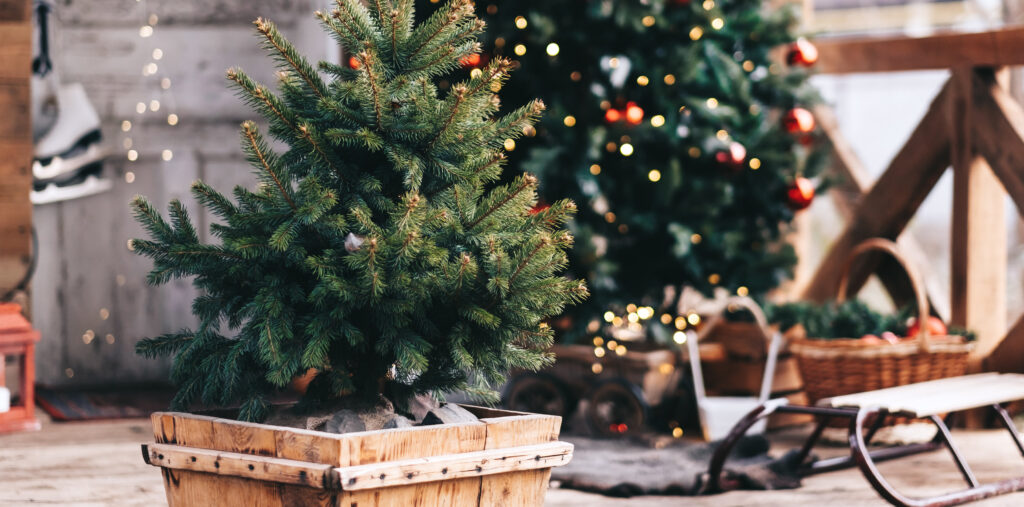by Debra Lewis –
Local retired naval officer, Doug Mitchell, decided to journey to Haida Gwaii in his 45-foot boat for several reasons. He had not yet seen the central and north coasts of British Columbia, and he had a yearning to take his 65-year-old decommissioned BC Forest Service patrol vessel further afield. Mostly, though, he was “fascinated by Haida Gwaii, a unique area which has been inhabited by the Haida people for over 12,000 years.”
Doug and his friend, John Gourlay, made the 2,300-nautical-mile round trip to Haida Gwaii via Prince Rupert in September and October 2018, but it had been months in the planning: “We had predetermined tracks with multiple options built in,” Doug explains. “Our daily routine was dependent on weather, sea conditions and tidal currents. You have to be ready to make changes to suit the local conditions.”
Of the 10-day journey to Prince Rupert, Doug says: “It was rewarding in its own right just to travel through those waters.” He remembers “granite cliffs, dense forest, and very deep narrow channels.” And of course, the wildlife: “We had to be very careful not to run into a surfacing humpback whale.” Other marine life they met included seals, sea lions, otters and Pacific white-sided dolphins that would swim off the bow of the boat.
After a smooth journey as far as Prince Rupert, their passage across Hecate Strait to the Haida town of Massett at the top of Graham Island was more challenging. “The tidal currents entering Hecate Strait from both ends are strong,” explains Doug, “and that invariably means that a northerly or southerly wind can stir up short, steep waves. So we had about three hours of rough water.”
A safe arrival at Massett, where John’s wife, Lily, joined them, was followed by three weeks touring the islands which make up the archipelago. Doug is without doubt that the highlight of the tour for him was the visits to the five First Nations heritage sites in the Gwaii Hanaas National Park Reserve, remains of long abandoned Haida villages.
The sites have a unique historical and cultural value and their integrity is carefully protected. On their arrival at each site Doug, John and Lily were met by a Haida Watchman, who explained the features and significance of the ancient remains. “Each Watchman gave us a slightly different perspective of the history of the Haida people.”
Doug remembers weathered, carved cedar mortuary poles which once bore the bones of Haida chiefs and notable elders, longhouse remains which the Haida people have largely cleared of the trees which grew up over the years, and an environment he describes as “predominantly uninhabited and wild. There’s a feeling you get that you’re in such a remote area. It’s kind of a magic. You try to visualize the Haida communities that lived there so long ago.”
Of the Haida people today, Doug says: “I came away with an enormous respect for them. There is so much we could learn from them that would be of advantage to us.”
He was struck by their relationship to their environment and to their far-sighted approach to its preservation. “They have respect for orcas, ravens, eagles … all of nature. They see themselves as ‘part of’ and not as dominant, as custodians whose job it is to take care of the creation around them during their life span.” He adds: “They have the ability to think longer term for the benefit of their children and grandchildren, to consider what kind of land or culture they are going to leave for the next generation.”
Asked what he took away from the experience, Doug says: “It’s given me a small insight into aspects of a better way of living, of how to treat people and the environment, to value the moment but also to think of the future.”
Photos by Doug Lewis.




